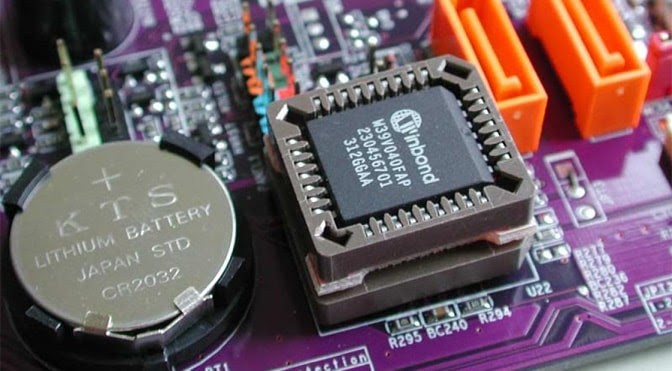
BIOS, CMOS, UEFI – What’s the difference?
What is the BIOS, CMOS, and UEFI? So that's what we're going to talk about. Now BIOS stands for Basic Input Output System. The BIOS is firmware that's built into the motherboard that initializes the computer's hardware as the computer is being booted. And then after it initializes the hardware, it then searches for a boot device, such as an optical drive, or a storage drive to boot software, such as an operating system.
So from the start, when you first turn on the computer, the computer does what's called a power-on self-test or post which is run by the BIOS, it tests the computer to make sure all the requirements are met, and if the hardware is working correctly before starting the operating system. If the computer passes the test, the internal speaker will make a short single beep which indicates that the computer has passed the test and is booting up normally. However, if there are no beeps or multiple beeps, then that means that the computer has failed the test and something is wrong, and the computer needs further troubleshooting to find out what the problem is. So whether there are no beeps or multiple beeps, the computer will generate a beep code to help you pinpoint the problem. So for example, if the computer generates three long beeps, then that could indicate a keyboard error. Or if the computer generates a continuous short beep, then that could indicate a problem with a ram module. So whatever BIOS is installed on the computer's motherboard, you can always refer to the manufacturer's documentation to find a list of beep codes and what they mean. So you can pinpoint a problem and correct it in the BIOS software which is stored on the BIOS chip on the motherboard. The BIOS chip is nonvolatile, which means that the contents of a chip are retained even after the power is turned off. But even after the computer is turned off, the computer does need to maintain certain settings such as the date and time of the boot sequence and certain hardware settings. In other words that custom settings that you have configured in the BIOS. And these settings are stored on the motherboard in a special chip called a CMOS chip. But unlike the BIOS chip which is nonvolatile, the CMOS chip is volatile, meaning that it needs constant power to maintain its contents or settings. So for the CMOS to maintain its settings while the computer is turned off, it uses a battery. And this battery is called the CMOS battery. The CMOS battery is a small button cell battery, which can be seen on the surface of the motherboard, and it's usually located on the bottom right-hand corner. And it's basically the same type of battery that is typically used in wristwatches. Now as I stated before, the CMOS needs constant power that is supplied by the battery. But if the battery is removed, and then reattached, the BIOS will reset back to its default settings from the manufacturer, and erase any custom settings that you have configured. Now a lot of people get confused about what's the difference between the BIOS and CMOS, and these terms are often used to refer to the same thing, but they are different. So just to clarify things, the BIOS is the actual firmware or program that comes with your motherboard. And that firmware is stored in the BIOS chip. But the settings that you actually make to the BIOS, such as the date and time of the boot sequence, fan speeds, and things like that, those settings are retained in the CMOS chip. Now the CMOS chip is not necessarily its own chip on modern motherboards, it's been integrated with the real-time clock that's part of the southbridge chipset.
Now a new type of BIOS is called UEFI. UEFI stands for Unified Extensible Firmware Interface. Now, most if not all, new motherboards are shipped with this newer type of BIOS; UEFI has several advantages over the old BIOS. And the first and most obvious just by looking at it is that it has a user-friendly graphical user interface that supports different colors and even animations, whereas the old BIOS has your typical blue screen that resembles the windows blue screen of death. UEFI can also recognize larger storage drives and you can even use a mouse in the UEFI interface whereas comparing to the old BIOS, where mouse support wasn't even available, and you had to use your keyboard only. And UEFI also has a built-in feature called secure boot and secure boot stops any digitally unsigned drivers from loading; it also helps to stop malicious software such as rootkits.
--
3wHow to take the password off if is not working on reset
RPA Developer | Microsoft Power Platform Developer
3yThanks for sharing